I’m often asked different questions about my work and process, and I’ve started to save some aside as opportunities to expand upon here on Muddy Colors. It’s mainly when the questions are broader topics that also require more time and thoughtful consideration than just a quick reply in a DM that I’m referring to. For example, one that I get asked often is about the abstract areas of my paintings. Things like: “What does the abstract mean to you?” or “Do the abstract marks have meaning?” Without completely explaining in exact detail what the abstract areas and marks mean in my work, I wanted to expand upon those questions in a general sense a bit here.
I should note, as a general point, that the abstract marks or areas in each piece tend to represent something different as they would pertain to the story or message according to each image. Also, there is definitely a subconscious notion of composition involved while making them, and the act of making them is not really about decoration at all. It’s more about exploration overall.
For me, the abstract areas are opportunities to explore and discover. To be in the practice of making them offers the possibility for the chance of something new to occur, to journey into unknown territory, to connect to something on the fringes or beyond. So, this part of the answer is about the actual making or doing, and it’s absolutely essential to the process for me. Without exploration and discovery, none of this would be worth it to me, honestly. And exploring and discovering happen in all areas of painting, not just in the abstract areas – it definitely happens in the rendering or representational areas too – but I’m going to stick with focusing on the abstract aspect in this article.
I’ll use my painting “Where We Connect” as one example to expand on that a bit:
These marks in the environment or abstract areas were made with oil on claybord with a little bit of linseed mixed in. I immediately connected in terms of process on this one, having given up on expectations by intentionally experimenting with a surface that I knew would cause the materials to react differently than what I tend to expect from what I use more often. I worked for a few days in a row on several at a time (as I do when I do these abstracts), and this was one that came about halfway through that group of abstracts. My intention with this group of abstracts was to try to do a different kind of mark-making and combine the use of of some different tools on each piece. Otherwise, my main intention was to not have intentions or expectations.
Here are a few of the abstracts from this session, to get an idea of what I mean by trying different kinds of mark-making:
The claybord surface is so absorbent that the paint dries almost immediately once it hits the surface. The linseed does extend the drying time out a little bit, and of course, thins the paint, so any coverage or opacity is made by the process of layering which can be done in one session because of the quick drying time. It’s similar to acrylic in the way that it dries fast, but the nature of the paint, the feel, and the color is not. It’s just mainly the drying time and the ability to layer quickly because of the drying time that’s similar.
All of this as a way of working was producing much different results aesthetically than what I was used to with oil on many other surfaces. I loved what was happening with this combination of things, but I think my love for it came mostly from how I was instantaneously lost into the making of the painting the second I started to put paint down. The nature of it being so different and instantaneous is what thrust me into that mode. And when I say ‘lost’, I mean it in the best way possible – I mean it in sense of being free – to be lost in the act of painting. I strive to be in that state as much as I can be when I paint – that is to say in a state that allows for responding to what’s happening instead of only dictating what’s happening or having set expectations, much like a dialog or the spontaneity of a conversation is – especially in this beginning stage and in the making of abstracts.
To me, these were trees and pathways that converge together in the distance because of the similarity of colors and textures and lighting. And more specifically, it was that summer-into-autumn time of year, and as I began to get more lost, it was more familiar and close – this was the field of oaks at the end of the street where I grew up, that led out to the American River. All quiet but the sound of birds and the crunching of dry brush and ground under my feet as I walked. And I was there when I painted this. I’d been there thousands of times in my childhood, so it’s not a stretch to be able to draw upon that visual if I let myself get to that lost/free state of being. But I’ve been thousands of places since then, and those are a part of me now too, so this image is a combination of all of those things as a glimpse of a memory combined with everything else. It’s not a photograph of that place, but a memory converged with fragments of other memories that makeup who I am.
At the end of making several of these abstracts, I’ll often sit back and take a look at them all, and think about what’s happening in them. They often get me thinking about how we connect in places like that. In the ethereal, in the unknown. To the earth, to ourselves, to others. They get me thinking of how we are made up of all of these intangible things as well as those tangible/physical things. It’s what we consist of within and behind these faces we have become accustomed to identifying each other and even ourselves by. It isn’t our likenesses that we grow to know, but the experiences that connect us. The experiences have visuals as references, sure, but also have something intangible connected to those visuals. And those are just as real. The point being that real does not only equate to tangible.
On the subject of “real” and tangible/intangible, I’ll share a piece of a dialog I had a bit ago, comparing a self portrait I finished in 2007 to one of my more recent portraits finished at the end of 2018. When juxtaposed like this, it shows a pretty distinct contrast in overall look and feel, but the evolution was a steady, gradual evolution. I’ve always painted abstracts and experimented with different tools, but when it came to making finished paintings, I kept that separate. The experimentation was in order to learn and discover, but on a different surface meant for practice before attempting something in the finished painting. Eventually, the two aspects of my painting merged, and this suits my temperament much better. These examples apply here to answer the question of the abstract having meaning as it pertains to the finished painting, with the marks being something for the viewer to interact with, and not only for the purpose of my interaction with them as I’m in the process of making them.
The self portrait on the left was actually started and mostly finished in 2005, but had a completely different hand and no mask – I changed the arm and hand and added the mask in 2007, and then called it finished. The painting on the right was finished at the end of 2018. Many of my paintings are self portraits in some way or another. I just don’t overtly paint them as such like I did back then. But really, the one on the left served a different purpose (especially in hindsight). I see it now as more of a study of form, a staging of light and shadow, some figurative aspects, and a gaining of an understanding of the medium. Over time and through experience and adversity everything has evolved to serve a much greater purpose – To represent a collective, a solidarity and a journey – To speak with and be engaged with others as we are one and on the same or similar journey. To allow for interpretations and differences because it’s essential to our existence. The abstract areas definitely play a huge part in representing that story.
Much like in life and the interaction with other humans, one who looks at my work and only sees a face and doesn’t engage in the abstract is honestly missing a really big part of the story. When you look at The Voyager (on the right), there’s really no escaping that. It is what makes The Voyager who she is. The voyage has shaped her and become a part of her, she wears it with confidence, and it’s up to the viewer to engage in it (or not) to find out more. It’s not meant to be a quickly-passed billboard or a glimpse of a story that’s being told to the viewer, it’s a story that takes time and involves the viewer. It requires that the viewer be present and participate in a dialog or discovery as well.
What I’ve also become aware of over time is that there are definitely two aspects to that initial draw – a balance of realism and abstract. This may not pertain to every artist’s work, but I’ve noticed it in the context of my own. One aspect of the painting draws the viewer in, which provides the potential that they’ll stay for the rest. Or not. Much like how we operate in the interactions with one another.
Another thing I should mention is that I am very regularly doing these sorts of abstract works and have many of them around me in my studio all the time. They sort of live here with me until I am struck by one and grab it as my next piece to work on. So, many are what become underpaintings for finished works with a balance of figurative realism and the abstract showing through. They begin as paintings like the group I posted above, and some become paintings that maybe would be described as fantastical environments or landscapes. I haven’t shared many of those, but I have shared a few. Most of the abstracts I do, to me, tend to look like fantastical environments, and I do get caught up in making those when I have the time or opportunity to take them further in that direction from time to time.
Well, without going into too much detail about exact interpretations, I hope that this answers a bit about the abstract aspects of my work. If you’re new to my work or to reading my posts here on Muddy Colors, check out my other posts for more info about how I make marks, the materials I use, my process and progressions, and other topics as well. And if you have any other questions, please do let me know. I’d love to continue the dialog!


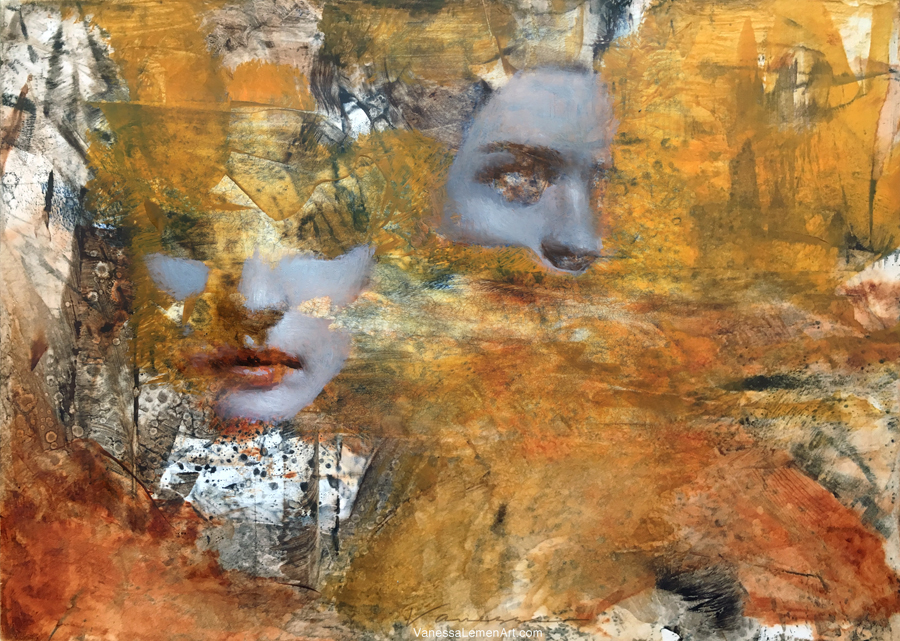
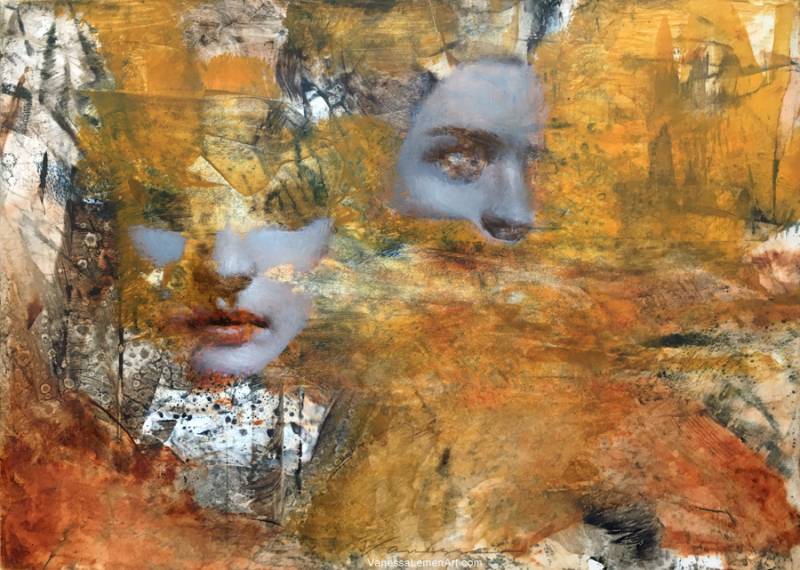
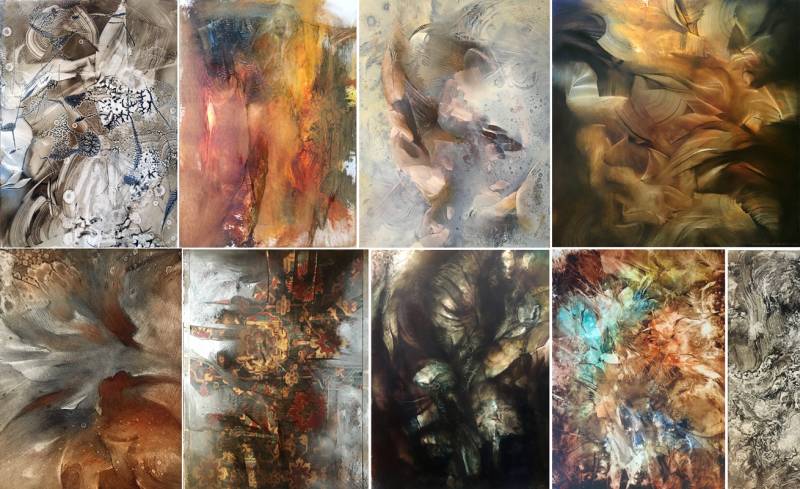

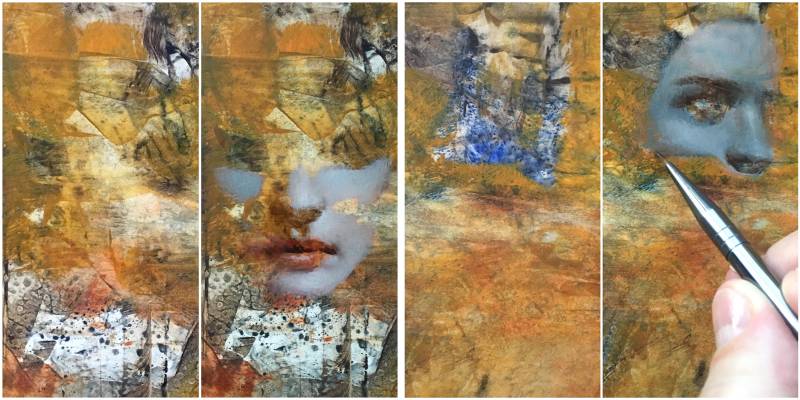

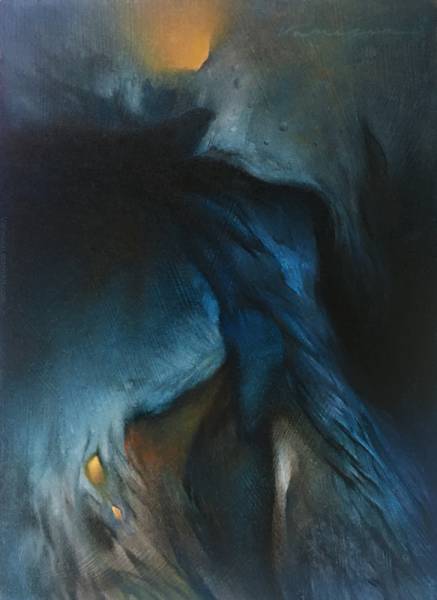


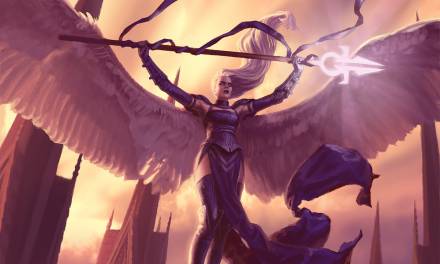
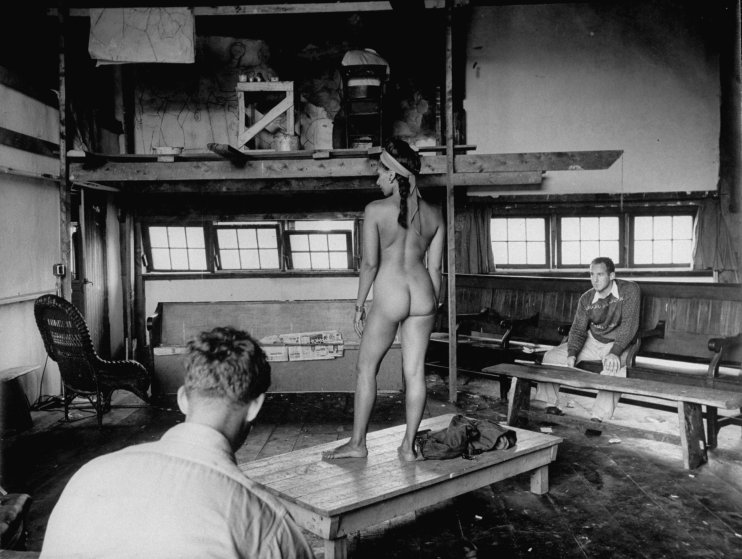
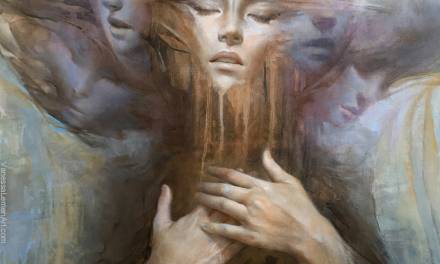

Lame technical question: have you had any problems with the oil on clayboard? I did a piece recently on clayboard because it was the only thing I had lying around. I love the fast drying time but I was paranoid the clay would fall apart in 6 months from oil absorption.
that’s not a lame technical question at all. 🙂 I haven’t had any problems, and many of the oil paintings I’ve done on claybord are well over 6 months old. But I’m not sure 6 months is a good gauge for longevity. I remember that I had searched online for info about that as well. My concern wasn’t so much about the clay falling apart, but with the oil paint having the oil drawn from it and it becoming dry and cracking. The Ampersand website has some info there, and I’m sure you could contact them too with any questions. But as far as my own personal experience, I have not had any issues or problems arise. I’ve used very thin layers using linseed, and applied the fat over lean technique with these pieces (which is how I’d work when layering in oil anyway) – I used linseed in the earlier layers on this surface mainly because of the quick drying, but it would be similar to oiling out the surface before painting on it, which Ampersand does mention as one way to work on this surface when using oil (mainly if the quick drying time is frustrating to you). Check out their site too. Hope that helps.
Thanks very much for the info. I will proceed with abandon. I love that surface for all the same reasons you do.